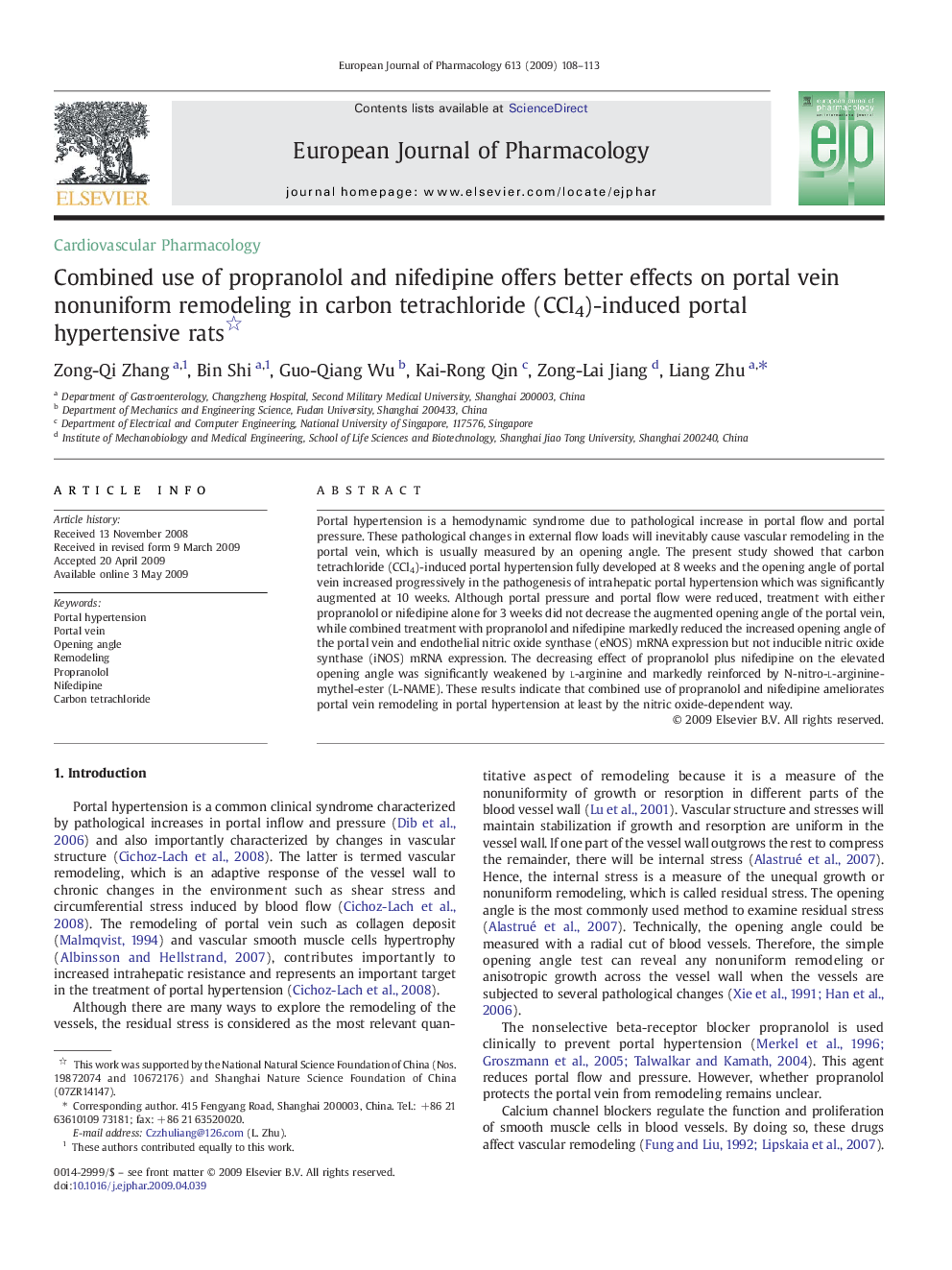| Article ID | Journal | Published Year | Pages | File Type |
|---|---|---|---|---|
| 2534289 | European Journal of Pharmacology | 2009 | 6 Pages |
Abstract
Portal hypertension is a hemodynamic syndrome due to pathological increase in portal flow and portal pressure. These pathological changes in external flow loads will inevitably cause vascular remodeling in the portal vein, which is usually measured by an opening angle. The present study showed that carbon tetrachloride (CCl4)-induced portal hypertension fully developed at 8Â weeks and the opening angle of portal vein increased progressively in the pathogenesis of intrahepatic portal hypertension which was significantly augmented at 10Â weeks. Although portal pressure and portal flow were reduced, treatment with either propranolol or nifedipine alone for 3Â weeks did not decrease the augmented opening angle of the portal vein, while combined treatment with propranolol and nifedipine markedly reduced the increased opening angle of the portal vein and endothelial nitric oxide synthase (eNOS) mRNA expression but not inducible nitric oxide synthase (iNOS) mRNA expression. The decreasing effect of propranolol plus nifedipine on the elevated opening angle was significantly weakened by L-arginine and markedly reinforced by N-nitro-l-arginine-mythel-ester (L-NAME). These results indicate that combined use of propranolol and nifedipine ameliorates portal vein remodeling in portal hypertension at least by the nitric oxide-dependent way.
Keywords
Related Topics
Life Sciences
Neuroscience
Cellular and Molecular Neuroscience
Authors
Zong-Qi Zhang, Bin Shi, Guo-Qiang Wu, Kai-Rong Qin, Zong-Lai Jiang, Liang Zhu,
